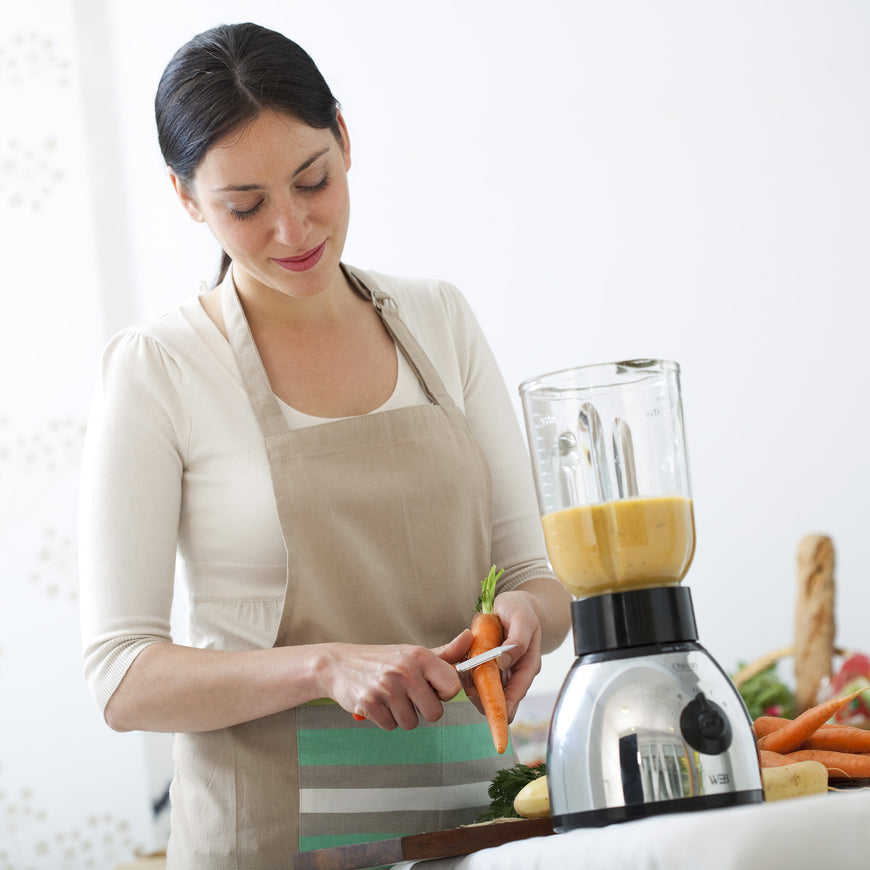Total
$0.00
In today’s health conscious world, giving your baby the right start to solid foods means providing them with all the goodness of whole, healthy foods that are made with love and full of nutrients.
Pre-made or store-bought food may seem easier in a pinch, but when you stop to consider the preservatives that are added to each tiny jar (not to mention the cost of each jar), you may wisely decide to try your hand at making food at home instead.
If you’ve ever wondered how to make baby food, you will be relieved to know that it is easy enough that even those who hate cooking can manage to whip up a healthy meal for baby right from scratch.
To get started, we offer some practical advice on what you will need, what sort of foods to choose and what other things you should keep in mind to make the process as fuss-free as possible.
3 Simple Tips for Making Baby Food at Home
So how do you go about making baby food? It’s simple – choose which fruit or vegetable you want to introduce to your baby, cook or steam until soft, puree until smooth and voila… you have made your very own batch of baby food.
As for the details, the following top tips will help you learn how to make baby food in no time at all.
1. Invest in the right tools.
First up, you will need either a blender, a food processor, or a hand-held stick blender that can get fruit, vegetables, grains, meat and other food to the perfect consistency. For the first few months of solids, foods need to be pureed with minimal lumps – as your baby begins to get used to eating with a spoon instead of a bottle or breast, textures should be smooth to aid digestion.
Once the foods have been blended or puréed, you'll need something to cook your baby food. Try a basic steamer, cooking pot duo, or an electric vegetable steamer.
A good freezer tray like the Kiddo Feedo Freezer Tray is also essential. Just portion out the puréed food into the individual compartments of the tray. Each portion holds 2.5oz (75ml) and has 1oz (30ml) and 2oz (60ml) volume markings for portioning out the servings. Cover with the silicone lid and place in the freezer for easy storage. At mealtimes, portions can be popped out and thawed before serving.
A food thermometer will also come in handy to make sure that foods are just the right temperature for little mouths.
2. Choose first foods carefully.
A good way to choose fruits and vegetables that are high in nutrients is by color. Brightly coloured veggies such as broccoli, carrots, squash, peas and pumpkin are high in vitamins and minerals, while also being visually appealing. Fruits such as apples, pear, mango and papaya can be introduced from about five to six months, and are also very high in vitamins, as are blueberries and peaches.
It is a good idea to speak to your paediatrician for advice on which foods to introduce first and to find out what age is best for solids (this could be anything from four to six months).
3. As always, safety comes first.
Making baby food at home is a convenient way to provide a healthy diet for your little one that is free of additives and preservatives.
Making and freezing small batches ahead of time goes a long way in making things simpler, but be sure to throw out any foods that have been touched with a used feeding spoon, foods that have been reheated once already, and foods that have been in the freezer for more than three months.
The Kiddo Feedo Freezer Tray is dishwasher safe – and it, together with all other bowls, spoons and utensils you use, should be washed after use.
Food should always be served warm but not hot. If you do not have a thermometer, use the back of your wrist to gauge the warmth of food before serving.
Avoid products or utensils that contain harsh chemicals that could react to heat, and always keep your hands clean before handling any food.
What happens when foods are rejected?
Be prepared for your baby’s food likes and dislikes, but also realize that as those tiny taste buds develop and new flavors are introduced, these will very likely change over time. Be patient, make sure you have plenty of wiping up cloths at hand and enjoy the taste adventure that comes around every feeding time.







